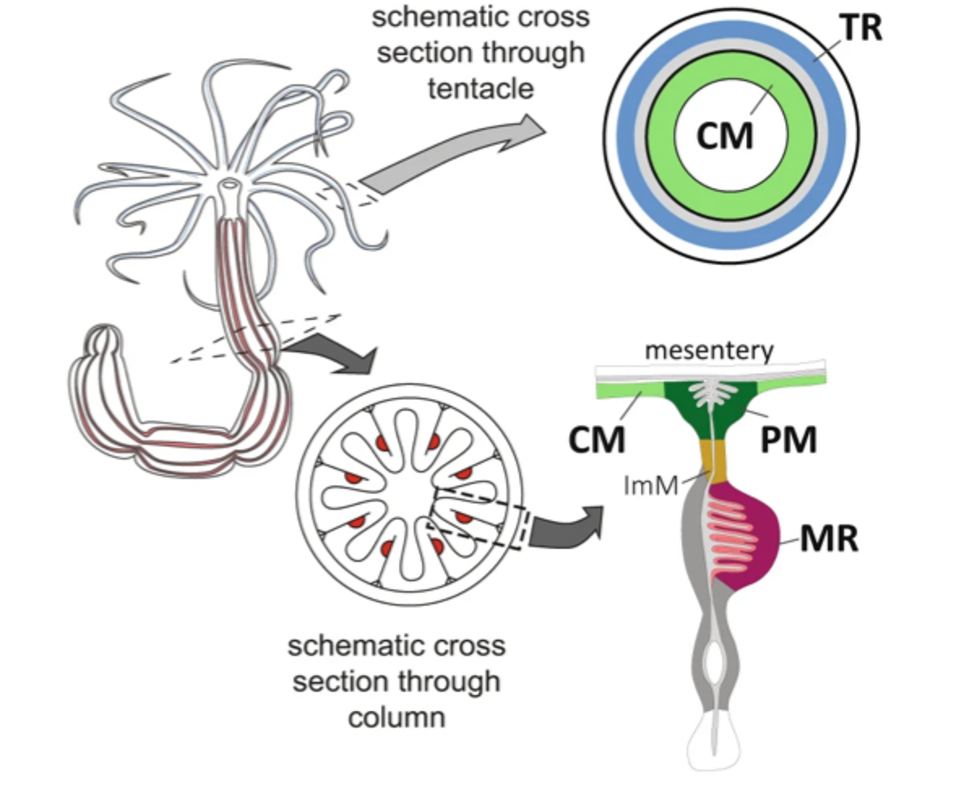Animals are typically composed of hundreds of different cell types, yet mechanisms underlying the emergence of new cell types remain unclear. Here we address the origin and diversification of muscle cells in the non-bilaterian, diploblastic sea anemone Nematostella vectensis. We discern two fast and two slow-contracting muscle cell populations, which differ by extensive sets of paralogous structural protein genes. We find that the regulatory gene set of the slow cnidarian muscles is remarkably similar to the bilaterian cardiac muscle, while the two fast muscles differ substantially from each other in terms of transcription factor profiles, though driving the same set of structural protein genes and having similar physiological characteristics. We show that anthozoan-specific paralogs of Paraxis/Twist/Hand-related bHLH transcription factors are involved in the formation of fast and slow muscles. Our data suggest that the subsequent recruitment of an entire effector gene set from the inner cell layer into the neural ectoderm contributes to the evolution of a novel muscle cell type. Thus, we conclude that extensive transcription factor gene duplications and co-option of effector modules act as an evolutionary mechanism underlying cell type diversification during metazoan evolution.

